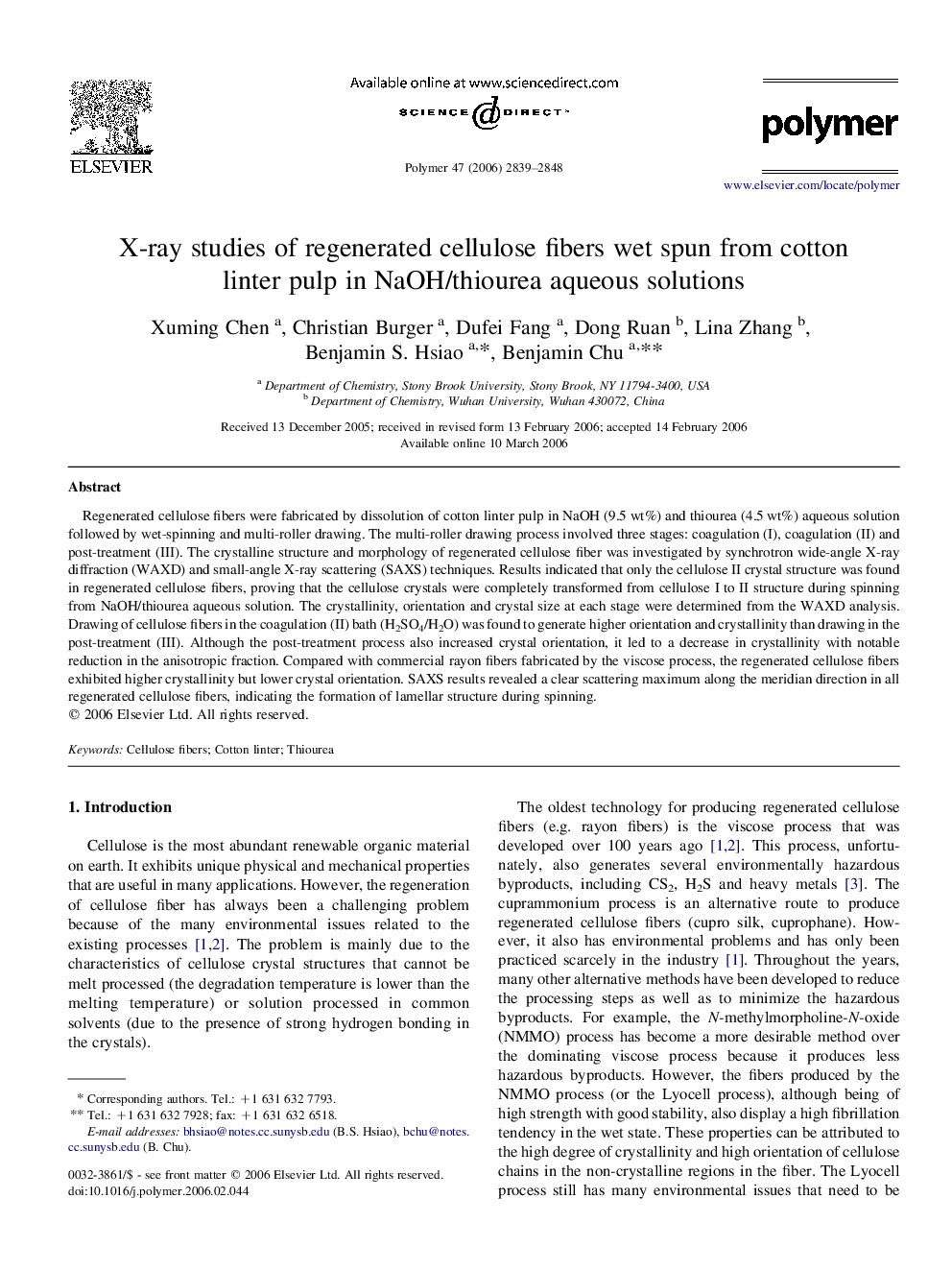| Article ID | Journal | Published Year | Pages | File Type |
|---|---|---|---|---|
| 5190824 | Polymer | 2006 | 10 Pages |
Abstract
Regenerated cellulose fibers were fabricated by dissolution of cotton linter pulp in NaOH (9.5Â wt%) and thiourea (4.5Â wt%) aqueous solution followed by wet-spinning and multi-roller drawing. The multi-roller drawing process involved three stages: coagulation (I), coagulation (II) and post-treatment (III). The crystalline structure and morphology of regenerated cellulose fiber was investigated by synchrotron wide-angle X-ray diffraction (WAXD) and small-angle X-ray scattering (SAXS) techniques. Results indicated that only the cellulose II crystal structure was found in regenerated cellulose fibers, proving that the cellulose crystals were completely transformed from cellulose I to II structure during spinning from NaOH/thiourea aqueous solution. The crystallinity, orientation and crystal size at each stage were determined from the WAXD analysis. Drawing of cellulose fibers in the coagulation (II) bath (H2SO4/H2O) was found to generate higher orientation and crystallinity than drawing in the post-treatment (III). Although the post-treatment process also increased crystal orientation, it led to a decrease in crystallinity with notable reduction in the anisotropic fraction. Compared with commercial rayon fibers fabricated by the viscose process, the regenerated cellulose fibers exhibited higher crystallinity but lower crystal orientation. SAXS results revealed a clear scattering maximum along the meridian direction in all regenerated cellulose fibers, indicating the formation of lamellar structure during spinning.
Related Topics
Physical Sciences and Engineering
Chemistry
Organic Chemistry
Authors
Xuming Chen, Christian Burger, Dufei Fang, Dong Ruan, Lina Zhang, Benjamin S. Hsiao, Benjamin Chu,
